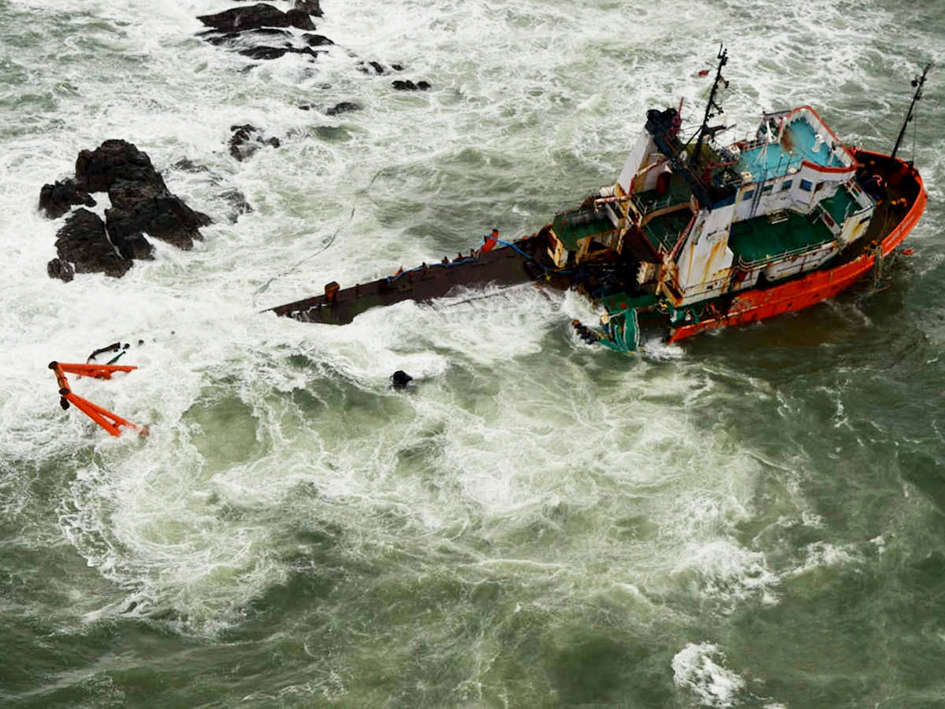Grim IPCC warning: Climate extremes to go up & up: India needs urgent disaster-proofing. Begin by quantifying the risks for every region
Every seven years or so, a report is released by the Intergovernmental Panel on Climate Change (IPCC) on how human-induced climate change is gathering pace and as a result, how extreme weather events have reached our doorsteps. So, what is new in the sixth assessment report of IPCC released yesterday?
The key takeaway from this report is that the mitigation strategies submitted by nations through the Paris Agreement are insufficient to keep the global temperature increase within the 1.5°C or even 2°C limits. It is also important to note that globally, we have failed to even reach near the committed curbs on emissions.
This points to the chilling fact that we are going to face way more challenging climate extremes in the near future. The IPCC report tells us that some of these changes are irreversible, and will last for centuries, if not a few thousand years into the future.
India’s geography makes it extra vulnerable
Why is limiting the temperature rise within 1.5°C necessary? Currently, the global mean temperature rise is 1.1°C, and nations like India are at a crucial juncture where we are already facing an increasing number of severe weather events such as cyclones, floods, droughts and heatwaves.
Why is India particularly vulnerable to climate change? The geography of India is such that it is surrounded by the warm tropical waters of the Indian Ocean on all three sides and the Himalayas on the north. This used to be the country’s forte but the ocean and the mountains have changed.
Frequency of cyclones has increased by more than 50%, and monsoon extreme rains have increased threefold. This is because these events derive their energy and moisture from the oceans – and the oceans have warmed up.
In fact, more than 93% of the heat from global warming has gone into the oceans, and Indian Ocean is warming at the fastest rate. The Himalayan glaciers are also melting at a fast pace due to increasing heat, threatening the lives and agriculture of downstream communities.
Floods and heatwaves scar the world this year
It is not just India; we are having floods and heatwaves across the globe on an unprecedented scale. The floods in China and Germany have been so unprecedented and devastating that the German Chancellor Angela Merkel said she does not have words to describe the extent of the weather event.
Western Canada and the US recorded scorching heatwaves in June 2021, with a station in British Columbia seeing a figure of 49.6°C that was 5°C above average temperatures. Research demonstrates that these events would have been impossible without climate change. Climate models also show that all these severe weather conditions will become more frequent, intense and widespread as global temperatures go up.
Multiple factors are aggravating the climate crisis. Our cities and hills and rivers are seeing unplanned and unabated development, turning the environment into a state that cannot absorb the floodwater or the heat anymore. Landslides have increased across the globe, and particularly in India, where unplanned land-use changes are extensive.
Challenge is global, some key solutions are local
We need a countrywide assessment that urgently maps the risks based on the changes in climate. Any kind of development should be planned based on an evaluation of these risks – whether that is a public infrastructure, or even a farm or a house.
We might need to redesign our cities. We need to disaster-proof every district of India because though climate change is global, the challenges are always local. We have the data and tools to monitor and quantify the risks for any region – what is stopping us from doing that? We also need a research centre exclusively for studying the growing threat of severe weather events like floods and cyclones – we do not have one at present.
As a climate scientist, I often shy from building that scary image of the planet again and again. But throwing some optimistic words at the end is not helping. I am sorry, I cannot do that. While the Covid curve might flatten with vaccination and precautions, climate change is on an upward slope that will not flatten in the near future.
We should curb the emissions, embrace sustainable development and natural defences – and more importantly, we need to assess the risk before we do anything with the environment.


Comments
Post a Comment